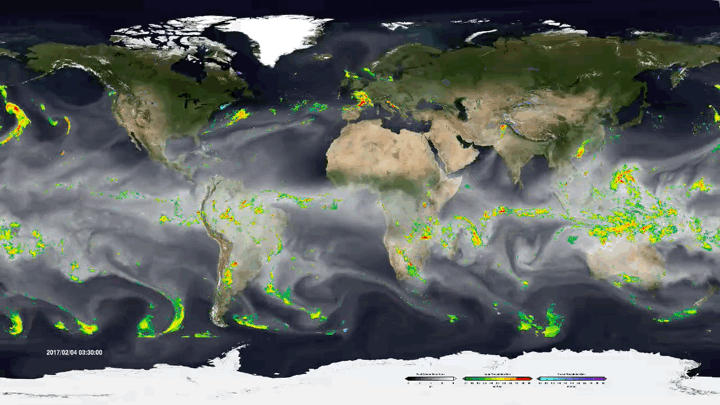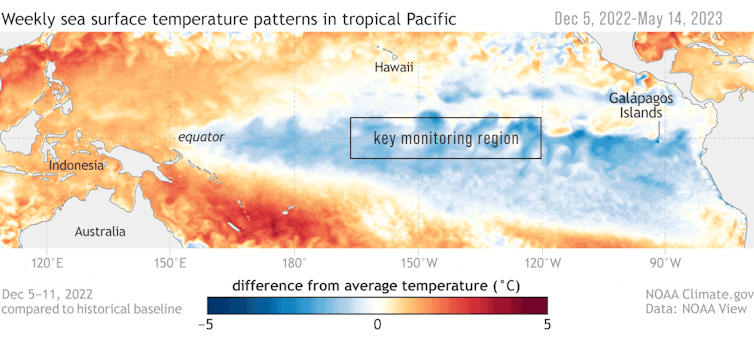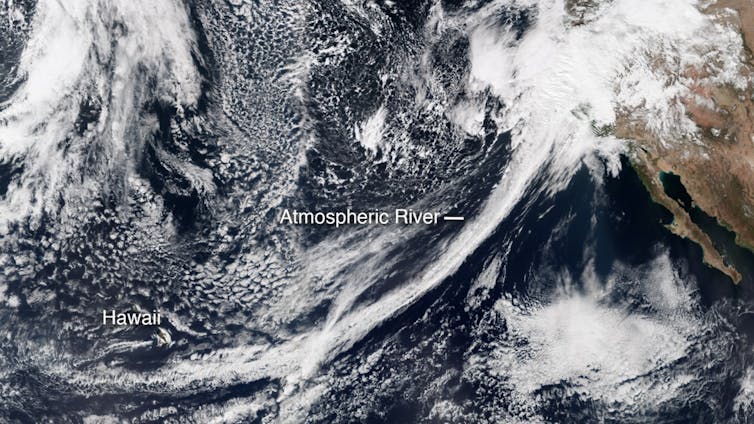Atmospheric rivers are shifting poleward, reshaping global weather patterns

- those long, narrow bands of water vapor in the sky that to the U.S. West Coast and many other regions - are shifting toward higher latitudes, and that's changing weather patterns around the world.
The shift is worsening droughts in some regions, intensifying in others, and putting that many communities rely on at risk. When atmospheric rivers reach far northward into , they can also , affecting the global climate.
In a published in Science Advances, University of California, Santa Barbara, climate scientist show that atmospheric rivers have shifted about 6 to 10 degrees toward the two poles over the past four decades.
Atmospheric rivers on the move
Atmospheric rivers aren't just a U.S West Coast thing. They form in many parts of the world and in these regions, including the U.S. and , , , , , and .
California relies on atmospheric rivers for . A series of winter atmospheric rivers there can bring enough rain and snow to , as parts of the region saw in 2023.

Atmospheric rivers occur all over the world, as this animation of global satellite data from February 2017 shows. NASA/Goddard Space Flight Center Scientific Visualization Studio
While atmospheric rivers share a similar origin - moisture supply from the tropics - atmospheric instability of the allows them to curve poleward in different ways. No two atmospheric rivers are exactly alike.
What particularly interests climate scientists, including us, is the collective behavior of atmospheric rivers. Atmospheric rivers are commonly seen in the , a region between the latitudes of 30 and 50 degrees in both hemispheres that includes most of the continental U.S., southern Australia and Chile.
Our study shows that atmospheric rivers have been shifting poleward over the past four decades. In both hemispheres, activity has increased along 50 degrees north and 50 degrees south, while it has decreased along 30 degrees north and 30 degrees south since 1979. In North America, that means more atmospheric rivers drenching British Columbia and Alaska.
A global chain reaction
One main reason for this shift is changes in sea surface temperatures in the . Since 2000, waters in , which affects atmospheric circulation worldwide. This cooling, often associated with , pushes atmospheric rivers toward the poles.
The poleward movement of atmospheric rivers can be explained as a chain of interconnected processes.
During La Niña conditions, when sea surface temperatures cool in the eastern tropical Pacific, the - giant loops of air that affect precipitation as they rise and fall over different parts of the tropics - strengthens over the western Pacific. This stronger circulation causes the to expand. The expanded tropical rainfall, combined with changes in atmospheric eddy patterns, results in and that steer atmospheric rivers farther poleward.

La Niña, with cooler water in the eastern Pacific, fades, and El Niño, with warmer water, starts to form in the tropical Pacific Ocean in 2023.
Conversely, during , with warmer sea surface temperatures, the mechanism operates in the opposite direction, shifting atmospheric rivers so they don't travel as far from the equator.
The shifts raise important questions about how climate models predict future changes in atmospheric rivers. Current models might underestimate , such as changes in the tropical Pacific, which can significantly affect atmospheric rivers. Understanding this connection can help forecasters make better predictions about and water availability.
Why does this poleward shift matter?
A shift in atmospheric rivers can have big effects on local climates.
In the subtropics, where atmospheric rivers are becoming less common, the result could be longer droughts and less water. Many areas, such as California and , depend on atmospheric rivers for rainfall to fill reservoirs and support farming. Without this moisture, these areas could face more water shortages, putting stress on communities, farms and ecosystems.
In higher latitudes, atmospheric rivers moving poleward could lead to more extreme rainfall, flooding and landslides in places such as the , , and even in polar regions.

A satellite image on Feb. 20, 2017, shows an atmospheric river stretching from Hawaii to California, where it brought drenching rain.
In the Arctic, more atmospheric rivers could , adding to global warming and affecting animals that rely on the ice. An earlier study I was involved in found that the trend in summertime atmospheric river activity may contribute over the entire Arctic since 1979.
What it means for the future
So far, the shifts we have seen still mainly reflect changes due to natural processes, but human-induced global warming also plays a role. Global warming is expected to increase the overall frequency and intensity of atmospheric rivers because a warmer atmosphere can .
How that might change as the planet continues to warm is less clear. Predicting future changes remains uncertain due largely to the difficulty in , which play an important role in atmospheric river shifts.
As the world gets warmer, atmospheric rivers - and the critical rains they bring - . We need to understand and adapt to these changes so communities can keep thriving in a changing climate.
![]()